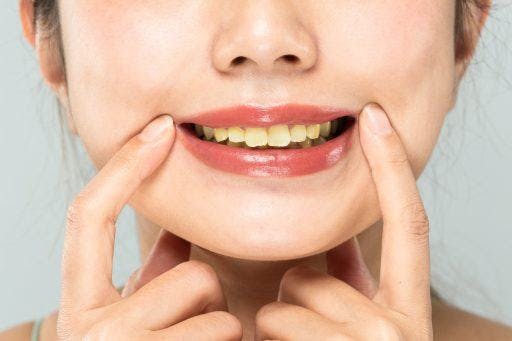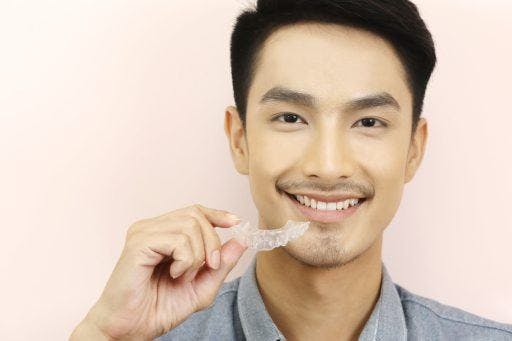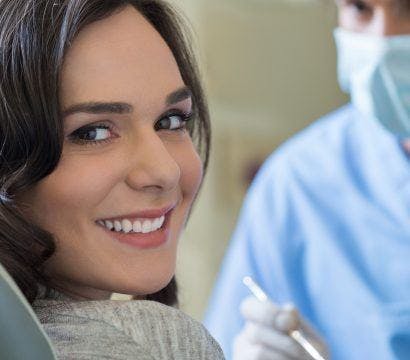Your skin and body are not the only things that transform as you age. Your mouth also goes through age-related changes, which can impact your oral health. These include yellow teeth, shifting alignments, tooth loss, receding gums, and dry mouth. Good dental hygiene habits and regular dental visits are necessary to keep these effects at bay.
What causes yellow teeth?

Are yellow teeth simply cosmetic? When your pearly whites turn into pearly yellows, it’s usually an innocent change, especially if you know why. You love coffee and beer and thus have to make certain sacrifices. However, if that yellowish hue is bothering you, getting to the bottom of it could resolve the matter. Here are some of the common causes of yellow teeth.
1. You’re getting older.
Ageing can make your hair grey and your teeth yellow. The surface of your teeth, known as the enamel, thins with time and use. As your enamel wears away, it exposes the inner layer called dentin, which is yellowish. Worn teeth are also more susceptible to staining.
2. Your diet’s affecting your teeth.
Teeth-staining food, such as coffee, tea, wine, or curry, are possible causes for your yellowing smile. However, there are other less likely suspects for your dental discolouration. Acids like soda and citrus fruits can erode the enamel quicker, exposing that yellow dentin.
3. You grind your teeth.
You don’t have to be in your sunset years to experience dental wear and tear. Conditions like bruxism (grinding) can speed up your teeth’s deterioration. Excessive brushing, poor oral hygiene, and genetics can also contribute to your teeth’s breakdown.
4. Your lifestyle habits are staining your teeth.
Nicotine from smoking isn’t just an unhealthy addiction. It leaves yellowish or brownish surface stains on your teeth, too.
Even the health conscious can be impacted by their lifestyle choices. Your sports drinks may help replenish lost fluids and energy, but the acids and artificial hues can also discolour teeth.
5. Some medication can make teeth yellow.
Yellow teeth can be a side effect of medication. For example, antibiotics like tetracycline and doxycycline can make teeth yellow or brown when consumed by children under eight. Some antihistamines and antacids can also discolour teeth with prolonged use.
6. You have fluorosis.
Fluoride is a crucial ingredient when it comes to oral hygiene, but too much of a good thing can make your teeth yellow. For instance, too much fluoride in children can disrupt enamel formation when their permanent teeth are growing.
While you’re checking dental care for ingredients, check your mouthwash too. Chlorhexidine is an antiseptic that can also stain teeth.
How to reduce your chances of getting yellow teeth
Reducing your chances of yellow teeth means practising good oral hygiene and mindful lifestyle choices.
Follow these tips to keep your teeth as white as long as possible:
- Brush your teeth twice daily for at least two minutes, using fluoride toothpaste and a soft-bristled toothbrush.
- Floss daily to remove plaque and food particles between teeth and along the gum line.
- Rinse with mouthwash to help kill bacteria and freshen your breath.
- Reduce teeth-staining food and drinks that can cause teeth discolouration over time.
- Quit smoking, which causes yellowing teeth and other oral health problems.
- Wear a mouthguard if you grind or clench your teeth to help protect your teeth from damage and prevent shifting.
Age-related dental changes

While yellow teeth may not necessarily affect oral health, other age-associated dental changes do. These include:
- Dry mouth. This common problem with older adults is due to reduced saliva production caused by ageing, certain medicines, or health conditions. Saliva helps protect your teeth from decay and helps keep your gums healthy.
- Tooth decay. It can be caused by plaque build-up on your teeth. The bacteria in plaque produce acids that can harm teeth enamel and cause cavities.
- Receding gums. A natural process of ageing, receding gums can expose the roots of teeth, making you more vulnerable to tooth decay and gum diseases such as gingivitis and periodontitis.
- Tooth loss. Poor oral habits can lead to cavities, tooth decay, gum disease, and even injuries that eventually result in tooth loss.
- Shifting teeth alignment. Teeth can move over time due to changes in bone density and loss of support from surrounding tissues, which are part of the natural ageing process. Tooth loss or extractions create gaps in the teeth, which can also cause your surrounding teeth to shift.
Tips for maintaining dental health with age

You can prevent or minimise most of these dental changes with good oral hygiene practices. However, some cases may need orthodontic treatment or other dental procedures. If you’ve noticed that your teeth are yellow, consult your dentist. Correcting yellow teeth can include whitening treatments, dental veneers, and dental bonding.
Can yellow teeth become white again? Yes, all hope is not lost! Yellow teeth treatments include whitening, dental veneers, and dental bonding.
Meanwhile, to help maintain your teeth alignment, you can ask your dentist about braces or clear aligners like ClearCorrect, which offer precision, comfort, and aesthetics for the best results in every aspect.
ClearCorrect has a proprietary ClearQuartz material. It combines two layers of resilient polymers with an elastomeric inner layer to apply consistent force to your teeth, shifting them to the right position. Moreover, you don’t have to worry about your aligners yellowing from use. ClearCorrect has been proven to be more stain-resistant than the leading aligner brand.
Take this online smile assessment to know if you’re a candidate.
The importance of dental health
Developing good oral hygiene habits helps prevent common dental problems, which can lead to pain, tooth loss, and other health issues. A study in the Journal of Ageing Research reveals that individuals with missing teeth (even those with dentures) had a 30% higher risk of death than those with at least 20 teeth or more. So, maintaining natural, healthy, and functional teeth is necessary to help increase longevity.
Your dental health also has a significant impact on your self-esteem. A healthy, attractive smile can boost your confidence and improve your overall quality of life. An International Dental Journal paper showed that preserving healthy natural teeth as you age benefits your mental, social, and emotional wellbeing.
By following these tips and practising good dental hygiene habits, you can help prevent yellow teeth and other ageing-related teeth changes. If you find this information useful, share it with your friends and family who may be seeking to boost their overall health.
References:
Aging changes in teeth and gums: MedlinePlus Medical Encyclopedia. (n.d.).
Haralur, S. B. (2015, August 1). Effect of Age on Tooth Shade, Skin Color and Skin-Tooth Color Interrelationship in Saudi Arabian Subpopulation. PubMed Central (PMC).
Müller, F., Shimazaki, Y., Kahabuka, F. K., & Schimmel, M. (2017). Oral health for an ageing population: the importance of a natural dentition in older adults. International Dental Journal, 67, 7–13.
Paganini-Hill, A., White, S. C., & Atchison, K. A. (2011). Dental Health Behaviors, Dentition, and Mortality in the Elderly: The Leisure World Cohort Study. Journal of Aging Research, 2011, 1–10.
Taking Care of Your Teeth and Mouth. (n.d.). National Institute on Aging.



